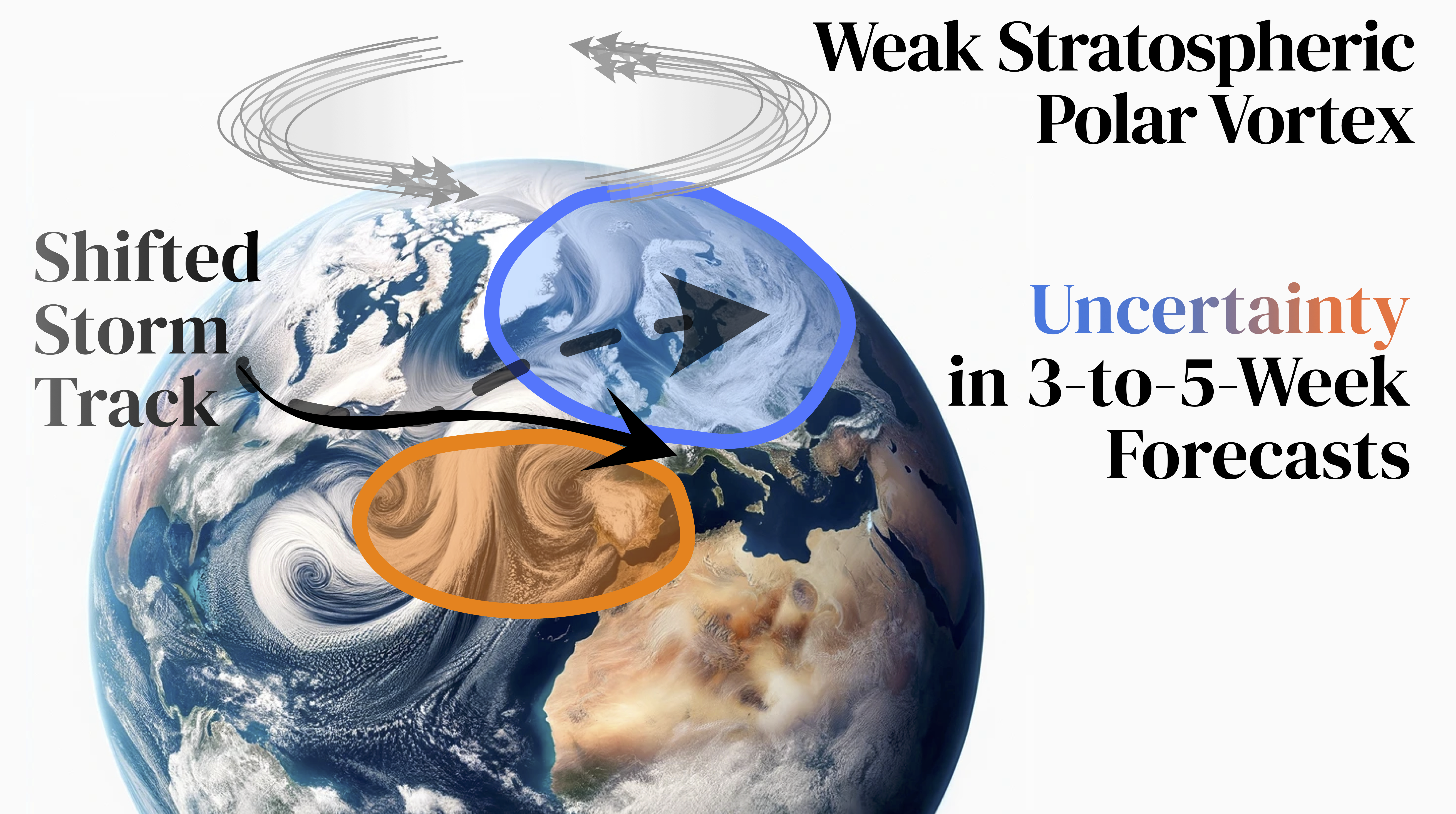Reduzierte Unsicherheit von Langzeit-Wettervorhersagen durch die Stratosphäre
14.03.2024

Weather is a chaotic system. Forecasts several weeks ahead are therefore generally associated with large uncertainty. However, such long-range forecasts can prove useful for various sectors, including agriculture, energy supply, and medical preparedness. Previous work has shown that during Northern winter the circulation in the polar stratosphere (at ~15-50 km altitude) may provide useful information for improved long-range forecasts, especially for weather over the North Atlantic and Eurasia. In particular, when the polar vortex (a band of strong eastward circumpolar flow at stratospheric levels) strongly weakens or breaks down the North Atlantic jetstream tends to shift southward and the likelihood of cold spells over Eurasia increases.
In our study we highlight an additional aspect of stratospheric in influence on long-range weather forecasts: weak polar vortex states are typically followed by reduced uncertainty of 3-5 week forecasts over Northern Europe. We find that ensembles of forecasts show a reduced range of possible weather conditions (by about 25%) and therefore enhanced predictability over this sector.
We attribute this reduced forecast uncertainty to the southward shift of the North Atlantic jetstream. The associated southward shift of the tracks of winter storms, which are the main source of forecast uncertainty during this season, causes less storm activity and thereby reduced forecast uncertainty over Northern Europe. Conversely, forecast uncertainty increases over Southern Europe.
Related publication:
- Spaeth, J., Rupp, P., Garny, H., Birner, T. (2024). Stratospheric impact on subseasonal forecast uncertainty in the Northern extratropics. Commun Earth Environ 5, 126 (2024). https://www.nature.com/articles/s43247-024-01292-z

